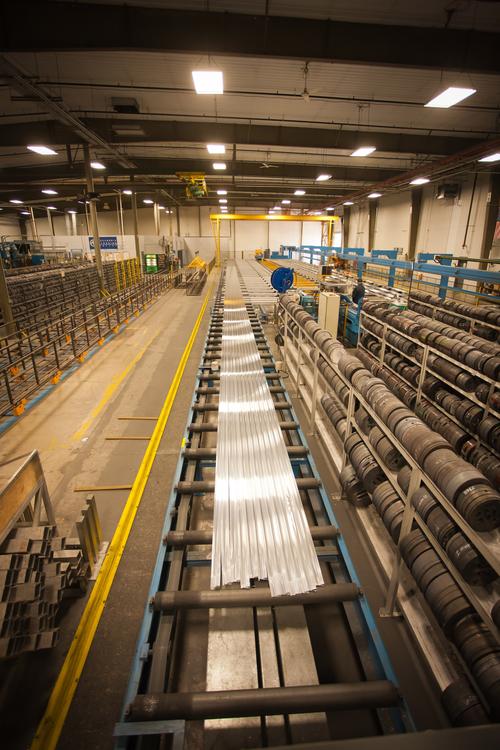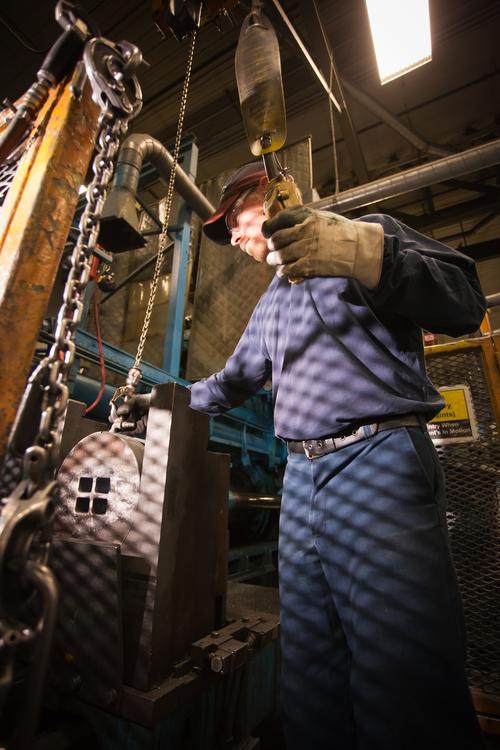5 Ways to Evaluate Aluminum Extrusion for Wider Application
January 27, 2015

Since appearing on the automotive scene in 1899, aluminum has taken a somewhat leisurely route to establish itself as “the manufacturing material of the future.” Ford Motor Company kicked off the material’s belated coming-out party with production of its 2015 F150 truck body and bed components that are 97 percent aluminum alloys.
After more than a century of progressively more mainstream application of aluminum – enabled by continual processing, fabrication and alloys innovations – the material seems to have (finally) arrived.

But the aluminum contribution is not limited to design and engineering solutions for automotive lightweighting. Its popularity is increasing not only throughout the transportation sector, but also in construction, solar, medical, electronics, and other industrial applications.
The increasing prevalence of aluminum in thousands of everyday products validates the material as high-end horsepower that will drive historic shifts in how steel-deploying manufacturers design, develop, fabricate, and integrate components or assemblies. This is especially true within the context of slimmer production budgets, tighter production schedules, supply chain complexity, and consistently more rigorous competition.
But advances in aluminum-based product design and engineering are not ramping upward based only on its alloys. There is a parallel story in how the methods for designing and manufacturing with aluminum have evolved. The story is filled with lessons manufacturers have learned – and techniques they have perfected – when it comes to manipulating aluminum for steadily broader application.
With aluminum on an industrial upswing, now is the time to evaluate extrusion as the material’s “force multiplier.” In this context, extrusion is a production technique and technology that, when combined with aluminum’s growing acceptance, can catalyze innovation even faster and more broadly across product R&D and manufacturing.
The constantly accelerating innovation pace in the auto industry is a good indicator that aluminum isn’t simply for stamped structural applications motivated by lightweighting. The Aluminum Extrusion Council (AEC) estimates the 2015 Ford F150 includes more than 40 pounds of extruded components. And, an AEC-sponsored report forecasts that the average per-vehicle weight of shapes extruded in aluminum, across all vehicles, will nearly triple over the next 10 years, indicating the material’s growth.
Elsewhere in the transportation sector, trailer manufacturing previously required bending, fabricating and welding sheet metal. Today, OEMs use lighter, one-piece extrusions for trailer frames and components that enable slide-together assembly. Similarly, solar manufacturers continue to refine the durability of aluminum-extruded racking and mounting systems by leveraging the versatility to add material and concentrate strength or durability precisely where required.

For medical equipment OEMs, rigorous material performance standards in medical applications make stainless steel the traditional specification to meet sanitary use and maintenance requirements. Yet with proper finishing treatments – including artificial aging and anodizing – extruded aluminum can be less porous and cleaner than stainless steel. The inert chemical compounds in aluminum, combined with proper finishing techniques to help prevent corrosion and chemical absorption, are critical to contamination prevention in medical care applications.
The development-to-delivery focus for every manufacturer is, “What’s possible next?” Media coverage anticipating the new Ford F150 rightly credits the aluminum surge as a revolutionary development for the automotive industry. Superlatives used to describe how aluminum will impact the future of auto manufacturing consistently support the material’s “game changer” status.
The story arc for extrusion includes similarities to aluminum’s automotive emergence. Extruded aluminum has steadily gained ground as relevant and strategic in every manufacturing aspect, especially product development and supply chain optimization. But the process has progressed relatively quietly.
Aluminum extrusion’s old-school heritage – other than wartime applications at the beginning of the 20th century – was not heavily industrial. Today, extruded aluminum components and assemblies are strategic factors in industrial manufacturing, with a key role in enabling OEMs to lower product lifecycle costs while making step-function improvements in product design, engineering and performance.
But manufacturers – influenced by understandable biases toward more familiar materials and processes – tend to experience only a small amount of what extrusion makes possible.
About the Author(s)
You May Also Like





